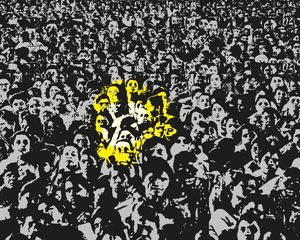Most men like the company of women, but RJD leader Abdul Bari Siddiqui is averse to women who cut their hair and wear lipstick. The former finance minister of Bihar told a rally last week that such women will claim every third seat in Parliament and state legislatures that may get to be reserved for women from 2029.
The tut-tut to bob cut and lipstick runs in the political bloodstream of many leaders. Years ago, while debating the predecessor bill to the present Nari Shakti Vandan Adhiniyam 2023, Sharad Yadav of the Janata Dal (U) had said the same thing in much the same words.
Blame not the two gents. Their words were crude, but the fear that women from elite classes and families will hijack the quota is genuine and widespread, and has been there since Nancy Astor walked into the House of Commons in 1919 and claimed the first seat by any woman in any Westminster-style Parliament. Ironically, the fear about elitism was aired first by a woman who had been fighting for women’s rights.
Lady Astor was nominated by the Conservative Party to contest in Plymouth Sutton after her husband, who had been holding the seat, was elevated to the House of Lords following his father’s death. She won the byelection, but the radical suffragist Constance Markievicz mauled her for being "of the upper classes, out of touch".
For all you know, it could have been personal jealousy. Markievicz had been elected to the house a few weeks before Astor, but had been refusing to enter the house since her rebel colleagues in Sinn Fein had been boycotting the house. She finally took her seat, but missed her place in history.
Anyway, the Nari Shakti Vandan Adhiniyam 2023 has been passed, assented to, notified and has become the law of the land of Sita, Sati, Savitri and Sairandhri. Other things remaining equal, a third of our hon’ble MPs and MLAs will be women from 2029 onwards.
But would the other things remain equal? Let’s see what those are.
One, a delimitation commission has to decide which constituencies will be reserved for women. Two, for a delimitation to happen, there has to be a census. The census, that used to take place in the first year of every decade, was not held in 2021 because of the pandemic. Now promised to be held after the 2024 polls, it will take two years to yield a final report. By then we will be into 2026.
A delimitation commission then will have to redraw the constituencies and their boundaries based on the headcount of every square mile of India. The last delimitation, which did not create new constituencies, took five years to redraw the limits of the 500-odd constituencies. It might be easy with faster computers this time, but tougher on the terribly shaking political earth of today’s India.
Why? Unlike the last delimitation, the next one will have to create or cancel constituencies based on the number of people in every square mile. That exercise, of creating seats based on the population of each region, has been frozen till 2026 because whenever it was attempted earlier it was found that it would give more seats to states that have a larger population.
Sounds logical, but therein lies the third ‘if’. Think of the gross political, economic and social injustice it would entail. The states that have controlled their populations will get fewer seats, and the states that have been letting their people to procreate wildly will get more. Parliamentary balance and political ballast would shift to one region; the ship of the Indian state will tilt dangerously.
How do we correct it, captains?
prasannan@theweek.in


